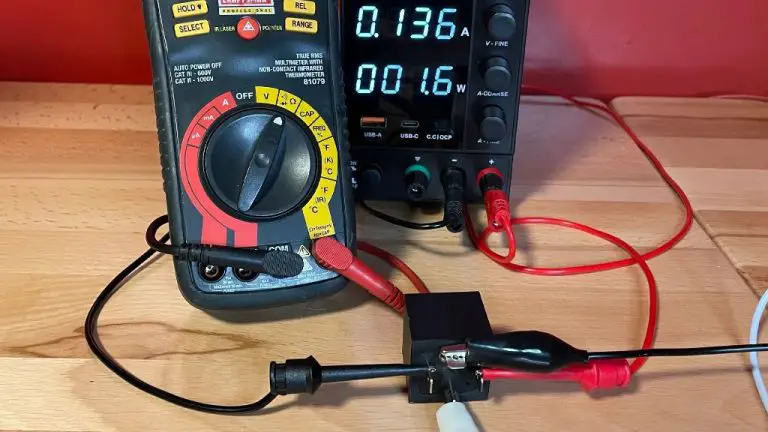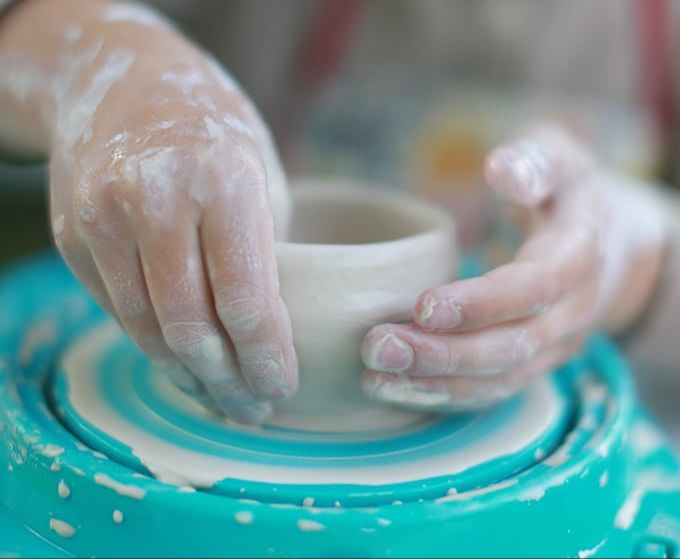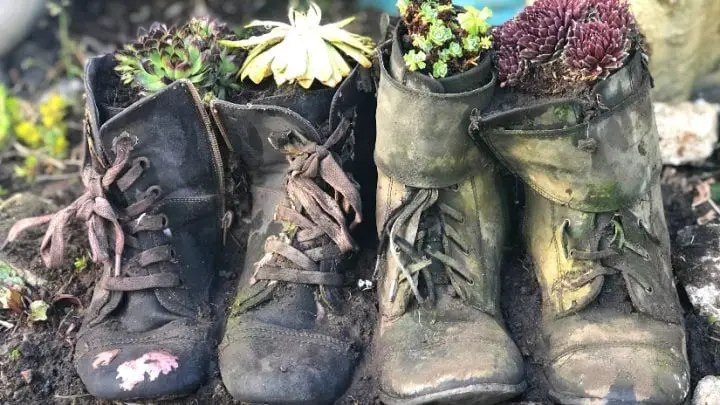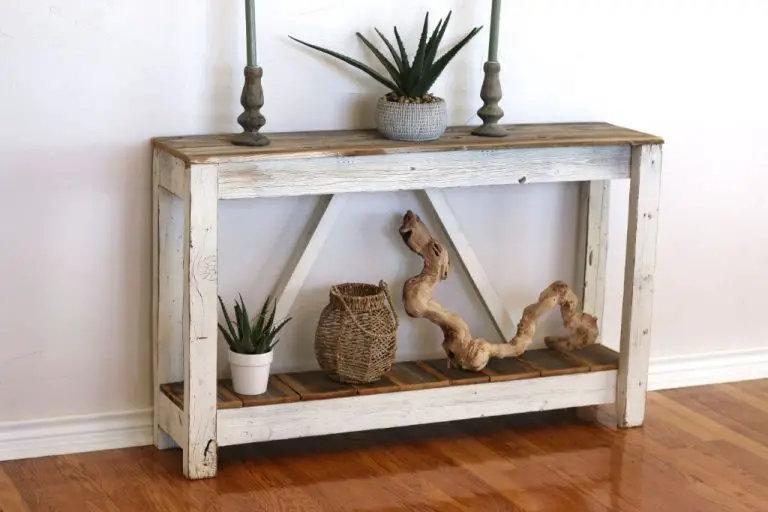Do African Violets Like Big Or Small Pots?
African violets (Saintpaulia) are a popular and easily grown houseplant known for their colorful flowers and fuzzy leaves. Native to tropical eastern Africa, they were first discovered in 1892 and commercialized in the 1920s. Since then, African violets have become one of the most beloved flowering houseplants thanks to their compact size, low maintenance needs, and ability to rebloom throughout the year.
This article will provide an overview of caring for African violets in pots indoors. We’ll explore what size pots African violets need, soil requirements, watering and fertilizing needs, when to repot, propagating techniques, controlling pests, and tips for displaying these beautiful plants.
Pot Size Considerations
When it comes to pot size for African violets, there are pros and cons to both small and large pots that need to be considered.
Small pots around 4 inches wide are often recommended for African violets (1). The small size helps keep the soil moist but not soggy. Since African violets are sensitive to overwatering, a small pot that provides quick drainage is beneficial. Small pots also restrain the growth of the plant, keeping it compact and tidy. However, a pot that is too small can limit root development and prevent the plant from reaching its full size. Frequent repotting may be needed if starting with a very small pot.
Larger 6-8 inch pots allow more room for root and plant growth over time (2). The additional soil can help buffer soil moisture. However, the larger volume of soil also stays wet longer after watering. This makes it easier to overwater and cause root rot in a large container. Proper soil mixes and watering technique are especially important with a big pot. Larger pots may also look oversized compared to the petite African violet plant.
In general, a 4-5 inch pot offers a good balance. It provides enough space for root development while still encouraging the plant to remain compact. When repotting into a larger container, go up just an inch or two in size at a time.
Soil Needs
African violets require a light, porous, and fast-draining potting mix to thrive. The ideal soil provides moisture retention while still allowing excess water to quickly pass through (Greg.app). A dense, compacted soil will lead to root rot and other problems.
A key component for a well-draining African violet soil is the incorporation of perlite, vermiculite, pumice, or other aggregates. These provide pores and spaces within the soil for drainage. A ratio of approximately 1 part aggregate to 2 parts potting mix is often recommended to create the right balance of moisture retention and drainage for African violets.
Additionally, it’s important that the soil pH falls between 6.4 and 7.0. Acidic soil conditions are preferred by African violets. When preparing your own mix, you can add sphagnum peat moss which naturally helps lower the pH (Greg.app).
Watering Frequency
The pot size you choose for your African violet will impact how often you need to water it. Smaller pots will require more frequent watering, while larger pots can go longer between waterings.
African violets in 2-inch pots need to be watered about every 4-5 days. A 3-inch pot needs water every 7-10 days. For a 4-5 inch pot, you can water every 10-14 days. And a 6-inch pot or larger may only need water every 2-3 weeks.
The reason pot size affects watering frequency is because of the amount of soil. A larger pot contains more soil which stays moist longer. A smaller pot has less soil so dries out quicker between waterings (Source 1, Source 2).
In addition to pot size, also monitor your plant and soil. Stick your finger in the soil and only water when the top inch becomes dry. Adjust watering frequency based on your specific growing conditions.
Fertilizing
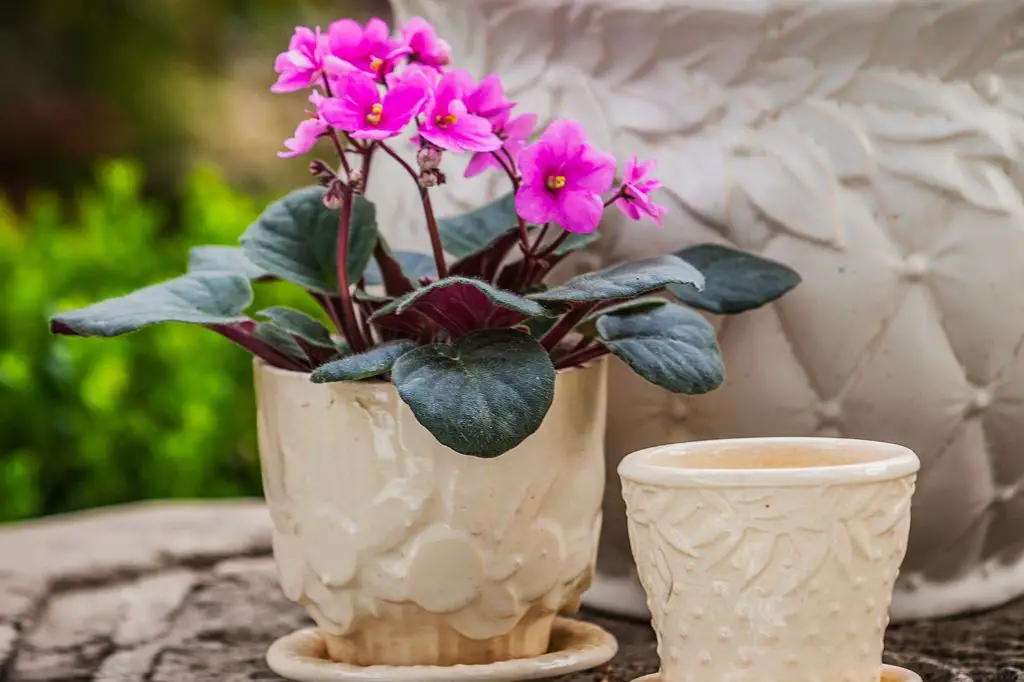
Fertilizing requirements for African violets can vary based on the size of the pot. Small pots with less soil will generally need more frequent fertilizing than larger pots.
For African violets in 3-4 inch pots, it’s recommended to use a diluted fertilizer once every 7-10 days during the growing season according to the University of Georgia Extension1. Use 1/4-1/2 of the recommended strength of fertilizer. In smaller pots, fertilizers can build up quickly and burn roots if overapplied.
For African violets in larger 5-6 inch pots or hanging baskets, fertilizing every 2-3 weeks is usually sufficient according to experts on Quora2. The additional soil helps dilute fertilizer applications. Use a complete African violet fertilizer following label instructions.
Regardless of pot size, it’s important not to over-fertilize. Flushing the soil every few months can help prevent buildup. Let the plant dry out slightly between waterings after fertilizing.
Repotting
African violets should be repotted about once a year or when the roots have filled the pot. Repotting gives the roots room to expand and allows you to provide fresh soil. The best time to repot is in the spring after flowering. Repotting while in bloom can cause transplant shock.
To repot an African violet, first water the plant well and let it drain. Carefully remove it from the old pot and gently loosen any circled roots. Prune any dead or damaged roots. Choose a pot that is about 1-2 inches larger than the current pot. Make sure the pot has drainage holes. Fill the bottom 1/3 of the pot with soil mix formulated for African violets, which is lightweight and provides good drainage. Place the plant in the new pot and fill in around it with more soil, firming lightly. Water well and let drain. Keep the plant shaded for a few days while it adjusts.1
Be very careful when repotting not to damage the crown where the leaves emerge. Repot gently to avoid transplant shock. With proper care when repotting, your African violet will recover quickly and resume vigorous growth.
Propagation
Propagating African violets is relatively easy and can be done through several methods like leaf cuttings, division, or plantlets. However, the size of the pot used can impact how easily the plant can be propagated.
Smaller pots make propagation easier in some ways. When taking leaf cuttings, it’s recommended to start them in pots that are 2-3 inches wide. This gives the baby plant room to develop roots while keeping the soil moist. With division, small starter pots allow you to separate the plant into smaller sections that will thrive better initially. Plantlets can also be removed and started in their own small pots.
Larger, oversized pots used for mature African violets can make propagation more challenging. There is more soil to keep evenly moist when starting cuttings or divisions. More space means it takes longer for new propagations to fill out the pot. However, larger pots may allow you to start multiple propagations together.
Overall, propagation is easiest when using appropriately sized, small starter pots for new plantlets, cuttings and divisions. This allows the new roots to establish with less effort. Then the propagated violets can be repotted into larger containers once mature. For advice on specific propagation methods, check out these helpful sources: https://greg.app/propagate-african-violet/ and https://www.repotme.com/pages/propagate-african-violet.
Pest Control
African violets can be susceptible to common houseplant pests like aphids, mealybugs, and cyclamen mites. The pot size can impact pest prevalence, as the confined space of smaller pots makes detection and treatment more difficult.
Mealybugs in particular thrive in the crowded conditions of undersized pots, where they can hide in tight areas and reproduce quickly. Their infestation may go unnoticed until major damage occurs. Larger pots allow for better air circulation and visibility to treat pests early.
However, oversized pots retain moisture longer, increasing risk of fungal diseases like botrytis and powdery mildew. Moderately sized 4-6 inch pots help prevent pests while still drying adequately between waterings.[1]
No matter the pot size, inspect violets regularly for common pests like whiteflies, aphids, and cyclamen mites. Isolate and treat infested plants quickly to prevent spread. Sticky traps and neem oil can help control populations. Maintaining proper growing conditions will help keep African violets vigorous and better able to withstand pest damage.
Display
When displaying African violets, the pot size can impact the overall aesthetic. Smaller pots tend to look more proportional and balanced when grouped together or arranged on plant stands. For example, a collection of 4-inch pots creates a cohesive look and takes up less space than mixing larger 8-inch pots (https://www.pinterest.com/ironmaiden1949/african-violet-display-ideas/). Using pots of a similar size also helps highlight the plants rather than the containers.
Larger pots may be preferred for standalone specimen plants or particularly full trailing varieties. An 8-inch pot can let the plant take center stage. When mixing pot sizes in a display, aim for visual harmony and plants of a similar maturity. Avoid overwhelming smaller plants with oversized pots. Consider the setting as well – a bright windowsill lends itself to many 4-inch pots while a pedestal calls for one dramatic 10-inch pot (https://www.pinterest.com/mayaluna12/african-violets/).
Conclusion
After considering the various factors that go into choosing the ideal pot size for African violets, the recommended pot size is small. Pots that are 4-5 inches wide and deep are ideal for these plants. Small pots provide enough room for the roots to spread out while still encouraging the plant to bloom more frequently. The small size also helps prevent overwatering and allows for easier propagation. While African violets can survive in larger pots, they tend to become leggy and produce fewer blooms. For the best display, health, and flowering, a 4-5 inch pot is the perfect size for an African violet.

